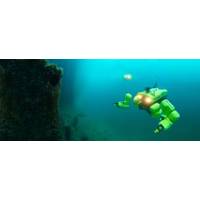
VideoRay Acquires Blue Ring Imaging
OctoCAM multi-view 360°camera, will improve situational awareness and object detection capabilities of VideoRay's Defender. Blue Ring Imaging already boasts an impressive client list, including the US Navy’s PMS 408, Office of Naval Research (ONR), Navy RDSA, OceanX, and Monterey Bay Aquarium Research Institute (MBARI).The acquisition of Blue Ring Imaging will drive the expansion of VideoRay’s capabilities. VideoRay will incorporate Blue Ring’s experience in artificial intelligence (AI), autonomy, augmented reality/virtual reality (AR/VR), 3D visualization and reconstruction
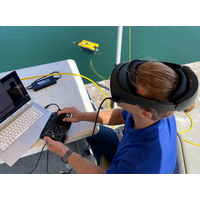
VideoRay Bolsters Subsea Mine Detection Robot with Blue Ring Imaging Acquisition
OctoCAM multi-view 360°camera, will improve situational awareness and object detection capabilities of the Defender. "Blue Ring Imaging already boasts an impressive client list, including the US Navy’s PMS 408, Office of Naval Research (ONR), Navy RDSA, OceanX, and Monterey Bay Aquarium Research Institute (MBARI). These customers will benefit from the greatly enhanced resources made available through the VideoRay acquisition," VideoRay said."With over 4,000 vehicles delivered worldwide, VideoRay has amassed unmatched experience in the design and manufacture of subsea robots
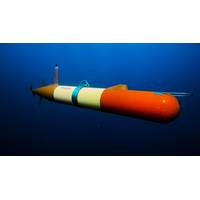
Saab Announces US Licensing Agreement for Long-Range AUV
Saab announces a new commercial licensing agreement with the Monterey Bay Aquarium Research Institute (MBARI) to bring their Long-Range Autonomous Underwater Vehicle (LRAUV) to the US market under the name Tethys. Saab will domestically produce and offer the Tethys vehicle for the oceanographic research, commercial, and defense markets.Tethys is an field-ready vehicle capable of travelling more than a thousand kilometers for weeks at a time. MBARI developed this now mature technology over the past decade to better explore, map, and monitor the ocean.Tethys’s low-power transit mode and over-the-hor
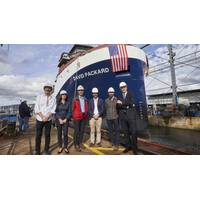
Freire Shipyard Floats MBARI's New Research Vessel
The hull of MBARI’s new flagship research vessel has been floated out at Freire Shipyard in Spain.The new oceanographic vessel, David Packard, which entered the waters of the Vigo estuary for the first time last month, is scheduled for delivery in 2023 to the Monterey Bay Aquarium Research Institute (MBARI), a private, non-profit oceanographic research center in Moss Landing, Calif.“The RV David Packard will be the first state-of-the-art research vessel built not only in Spain, but in the European Union, intended to operate in the waters of the United States of America
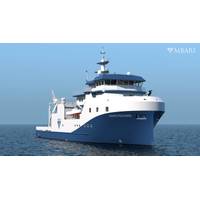
R/V David Packard to Sport Sonardyne’s Ranger 2 USBL
Monterey Bay Aquarium Research Institute (MBARI) selected Sonardyne's deepwater positioning tech for 50-m long R/V David Packard, its new scientific flagship.Named in honor of MBARI’s founder, David Packard, the vessel is being built to undertake a diverse range of missions in Monterey Bay and beyond, supporting the institute’s mission to advance marine science and technology to understand a changing ocean. Once operational, the ship will accommodate up to 18 researchers and will enable MBARI’s continued exploration of the deep sea, from the midnight zone to the abyssal

Uncrewed Saildrone to Explore Remote Alaskan Waters
Uncrewed Ocean Exploration expedition partners are working together toward these goals by leveraging shared resources and expertise to increase the pace, efficiency, and affordability of seafloor mapping.Beyond mapping, the Surveyor will also carry revolutionary technology from MBARI (Monterey Bay Aquarium Research Institute) to sample environmental DNA. Also known as eDNA , this genetic material can reveal important clues about marine biodiversity and, ultimately, ocean health. MBARI’s Environmental Sample Processor (ESP) is a “lab in a can” that will collect and preserve eDNA samples
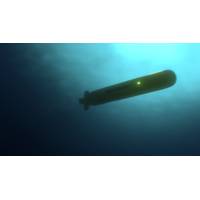
How AUVS Can Spot Oil Plumes After an Ocean Spill
the surface. Its extent and whereabouts couldn’t be determined from above.Autonomous underwater vehicles (AUVs) are untethered marine robots that can explore the underwater world. AUVs were first used in oil probing missions when the Woods Hole Oceanographic Institution and the Monterey Bay Aquarium Research Institute rapidly deployed them to assess the extent of the submerged plume from the Deepwater Horizon spill.Since then, AUVs have been developed to accommodate a variety of payloads that are similar to the sensing organs of humans, such as underwater cameras, sonars and chemical and sniffing
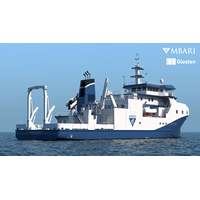
MacGregor to Equip MBARI's New Research Vessel
MacGregor, part of Cargotec, said it has been taped to deliver a suite of overboard handling systems for the new oceanographic research vessel David Packard owned by Monterey Bay Aquarium Research Institute (MBARI), a private, nonprofit oceanographic research center based in California. Founded in 1987 by David Packard, MBARI’s mission is to advance marine science and technology to understand a changing ocean. The David Packard is designed by naval architecture firm Glosten, and is currently under construction at Freire Shipyard in Vigo, Spain.The order was booked into Cargotec's third
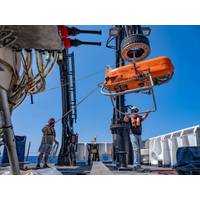
MTR 100: NOAA ... Working at the Interface of Exploration and Education
may be of scientific interest.NOAA Ocean Exploration is using new autonomous technologies to meet ambitious mapping and exploration goals. Through the National Oceanographic Partnership Program (NOPP), a multi-year grant was provided to the University of New Hampshire, Saildrone, and the Monterey Bay Aquarium Research Institute to test and integrate acoustic and other sensors into a new larger class of uncrewed surface vehicles powered by wind and solar power. The 22m Saildrone Surveyor is designed to collect bathymetry of the seafloor, water column data, and other priority environmental measurements and



 February 2024
February 2024





